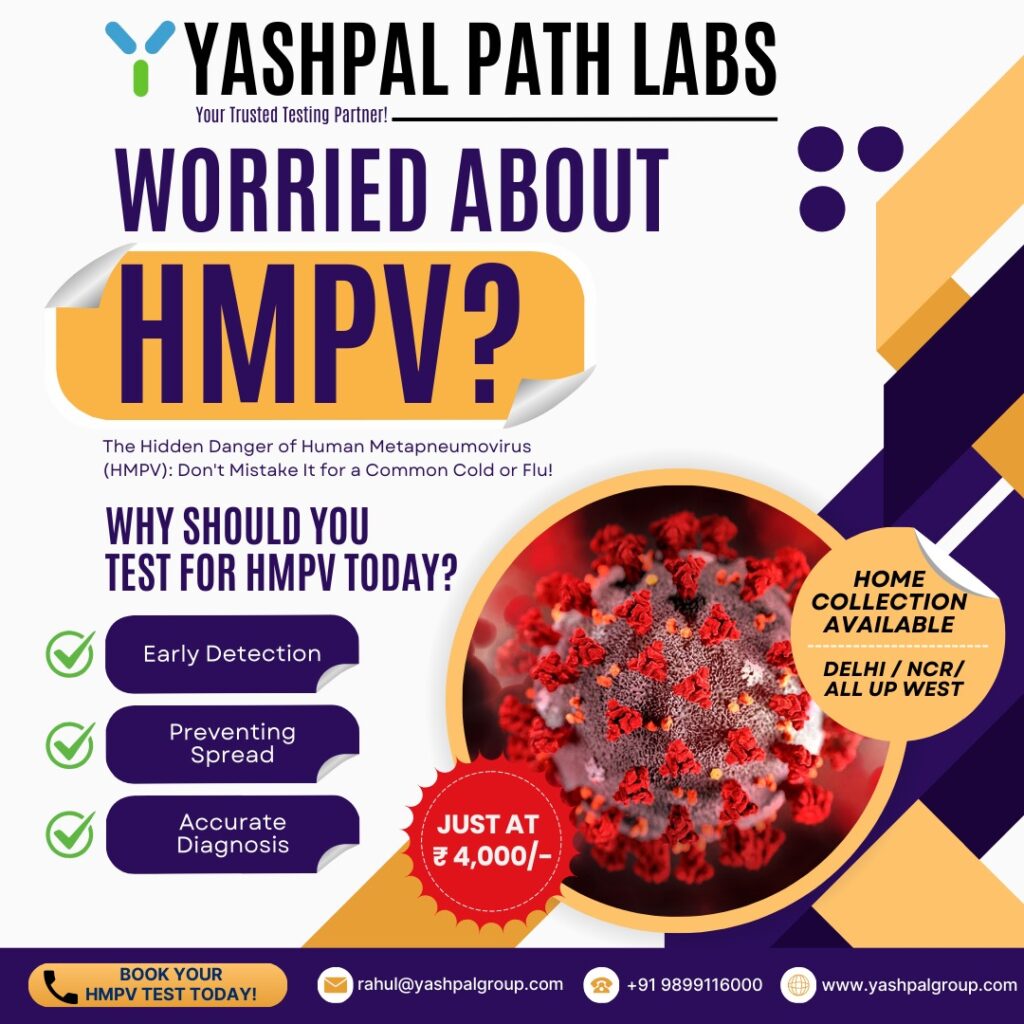By Dr. Rahul Malik, MBBS MD (Radiology)
Introduction
The human metapneumovirus (HMPV) outbreak in China has put the world on high alert. While HMPV may not be as famous as influenza or COVID-19, it is a significant respiratory virus. Though often mild and self-limiting, it can be severe in vulnerable groups such as children, the elderly, and the immunocompromised. This blog post addresses frequently asked questions about HMPV, its symptoms, treatment, and prevention, emphasizing Workplace Safety measures to reduce transmission risks.
What is Human Metapneumovirus (HMPV)?
Human metapneumovirus (HMPV) is a respiratory virus prevalent during the winter season. Discovered in 2001 by researchers in the Netherlands, it likely circulated in humans much earlier. HMPV belongs to the same family as the respiratory syncytial virus (RSV), which is known for causing severe colds in infants and older adults.
HMPV infections typically occur late in winter and into spring. The virus thrives in closed-contact environments, spreading quickly among families, schools, workplaces, and healthcare settings. While usually not dangerous, HMPV can cause pneumonia and bronchiolitis in high-risk populations.
Symptoms of Human Metapneumovirus Infection
Common Symptoms:
- Cold
- Cough
- Runny nose
- Nasal congestion
- Sore throat
- Low-grade fever
Severe Symptoms:
- High fever
- Shortness of breath
- Wheezing
- Chest pain
- Fatigue
Severe cases in high-risk groups can lead to pneumonia or bronchiolitis. If symptoms persist or worsen, consult a doctor immediately.
How Serious is Human Metapneumovirus Infection?
HMPV severity ranges from mild to severe. While most healthy individuals experience a self-limiting illness, certain populations are at higher risk:
- Infants and Young Children: Immature immune systems increase susceptibility.
- Older Adults: Weakened immunity raises the risk of severe illness.
- People with Chronic Conditions: Those with asthma, heart disease, or COPD may experience exacerbated symptoms.
- Immunocompromised Individuals: Cancer patients or those living with HIV/AIDS are more vulnerable.
In rare cases, HMPV may lead to death due to secondary complications like acute respiratory distress syndrome (ARDS).
Can Human Metapneumovirus Infection Cause Death?
HMPV-related deaths are rare but can occur. Complications may include:
- Pneumonia
- Acute Respiratory Distress Syndrome (ARDS)
- Respiratory failure
Early diagnosis and proper management are critical in preventing severe outcomes.
When is Human Metapneumovirus Contagious?
HMPV is highly contagious, especially during its incubation and active phases. The incubation period is 4-6 days post-exposure, and contagion can last up to two weeks. The risk of spreading is highest during the first few days of illness.
Modes of Transmission:
- Respiratory Droplets: Sneezing or talking can aerosolize virus-laden droplets.
- Contaminated Surfaces: HMPV can survive on doorknobs, phones, and tables. Touching these surfaces and then your face can lead to infection.
- Close Contact: Sharing utensils, kissing, or being in crowded spaces increases the risk of transmission.
Is Human Metapneumovirus Curable?
Currently, there is no specific cure or antiviral drug for HMPV. Treatment focuses on symptom management and supportive care.
Self-Care for Mild Cases:
- Rest: Adequate sleep aids recovery.
- Fluids: Prevent dehydration by drinking plenty of water.
- Over-the-Counter Medications: Use acetaminophen or ibuprofen for fever and discomfort.
Treatment for Severe Cases:
- Oxygen Therapy
- IV Fluids
- Low-dose Steroids
Avoid antibiotics unless prescribed by a doctor, as they are ineffective against viral infections.
How Long Does HMPV Last?
HMPV infections typically last 1-2 weeks, depending on the individual’s health and immune system:
- Mild Cases: Symptoms resolve within 7-10 days.
- Severe Cases: Recovery may take longer, especially if complications arise.
Lingering symptoms such as cough or fatigue may persist for weeks. Consult a doctor for prolonged symptoms.
Where Did HMPV Come From?
HMPV was first identified in 2001 by Dutch scientists. Genetic analysis suggests it originated from bird metapneumoviruses and later adapted to humans. Understanding the virus’s origins helps improve prevention and Workplace Safety protocols, especially in healthcare environments.
How to Protect Yourself from HMPV
Hygiene Practices:
- Wash hands frequently with soap and water.
- Use alcohol-based hand sanitizers when soap is unavailable.
Avoid Close Contact:
- Stay away from individuals with respiratory symptoms.
- Limit physical contact like handshakes during outbreaks.
Clean Surfaces:
- Disinfect frequently-touched items such as doorknobs, phones, and light switches.
Use Masks in Crowded Places:
- Masks can reduce inhalation of virus-laden droplets.
Strengthen Your Immune System:
- Eat a balanced diet, exercise, and stay hydrated.
- Get sufficient sleep to boost immunity.
Stay Home When Ill:
- Isolate yourself to prevent spreading the virus.
Seek Medical Attention for Severe Symptoms:
- Persistent high fever, difficulty breathing, or extreme fatigue warrant medical evaluation.
Final Words
The human metapneumovirus outbreak in China serves as a reminder to stay vigilant against respiratory viruses. While no specific treatment exists, preventive measures like good hygiene, mask-wearing, and avoiding close contact significantly reduce risk. Stay informed and proactive to protect yourself and your loved ones from HMPV. If you exhibit symptoms, visit a super-speciality hospital promptly for diagnosis and care.
For more insights, visit our Workplace Safety page for tips on maintaining a safe and healthy environment. To learn more about respiratory infections, explore resources on HMPV Testing.
FAQs
Q1: What is HMPV?
HMPV is human metapneumovirus, a respiratory virus that infects the nose, throat, and lungs. It spreads via respiratory droplets, direct contact, and contaminated surfaces.
Q2: Can antibiotics treat HMPV?
No, antibiotics are ineffective against HMPV as it is a viral infection. Treatment focuses on symptom management and complication prevention.
Q3: What is the best metapneumovirus treatment?
Supportive care includes rest, hydration, fever reducers, and oxygen therapy in severe cases.
Q4: Are metapneumovirus symptoms similar to COVID-19?
Yes, both can cause respiratory symptoms like cough, fever, and difficulty breathing. Laboratory tests are required to distinguish them.
Q5: Is it possible to prevent HMPV infections?
Good hygiene, mask usage, and avoiding contact with infected individuals are effective preventive measures.




